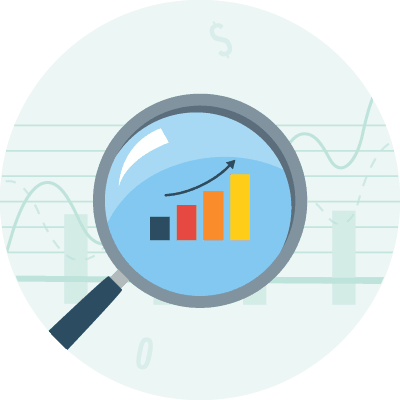What is Price-to-Rent Ratio?
REtipster does not provide tax, investment, or financial advice. Always seek the help of a licensed financial professional before taking action.
How to Calculate the Price-to-Rent Ratio
The price-to-rent ratio is easy to calculate. The formula is:
P/R = median property price median annual rent
For example, if the median home price in a market is $250,000 and the median rent is $1,200 per month, the price-to-rent ratio would be 17.36 [$250,000 ($1,200 x 12)].
The price-to-rent ratio can also be used to calculate rent:
Rent = median property price P/R
Say an investor buys a property and rehabs it to an after-repair value of $225,000. If they know the price-to-rent ratio in their market is 15, they could charge roughly $1,250 per month ($225,000 15 = $15,000 in annual rent 12 = $1,250 monthly rent).
Why is the Price-to-Rent Ratio Important?
The price-to-rent ratio indicates the demand for rental property because it shows whether buying or renting in a given market is more economical. It is a useful figure for both homeowners and real estate investors; homeowners use it to determine whether to rent or buy in a particular market, while investors use it to analyze potential markets, properties, and return on investment.
RELATED: What is Economic Obsolescence?
There are a few things to keep in mind about the P/R ratio, however. The first is that the metric says nothing about the affordability of a given market, only the economics of owning versus renting. In some high-cost markets, many people are priced out of homeownership, making the P/R ratio irrelevant simply because renting is the only option for them.
Second, the price-to-rent ratio moves in tandem with the housing market. During the 2008 housing crash, the P/R ratio increased dramatically in the preceding months. The Bureau of Labor Statistics reported that certain home prices, rents, and related housing expenditures factored into the P/R ratio that, in retrospect, might have predicted the crash[1].
How to Use the Price-to-Rent Ratio
The P/R ratio is an expression of the economics of renting versus buying in a given market. Generally speaking:
- A P/R ratio of below 16 suggests it is more economical for the average person to buy a home rather than rent one. In broad terms, this would not be a good range for investment properties, since the market favors buyers.
- A P/R ratio of 16 to 20 suggests that it is slightly more economical for the average person to rent a home rather than buy one. In this range, investors may find value-priced properties that still generate positive cash flow because there should be a ready pool of tenants for whom renting is more economical than buying.
- A P/R ratio of 21 or higher suggests that renting is much more economical than buying a home. However, it does not mean that it is automatically a good area for investment property since market rents may not generate positive cash flow and a good return on investment.
P/R ratio data becomes more valuable the more specific and focused it is. City P/R data can help investors identify areas that may have more potential than others, but it is far more helpful to calculate P/R ratios on a neighborhood-by-neighborhood basis to identify opportunities within a given market.
Note that investors should not view the price-to-rent ratio as an infallible identifier. Consider the following example:
Investor Ivan is looking for properties in a market where the median home price is $180,000 and the median monthly rent is $1,000. This yields a price-to-rent ratio of 15 (rounded). He identifies two properties with a P/R of around 12, below the market average.
- Property A is priced at $150,000 and has an annual rent of $12,500.
- Property B is priced at $155,000 and has an annual rent of $14,000.
After inspecting the properties, Ivan determines that Property A has a low P/R ratio because it is underpriced for the market and is probably valued closer to $175,000, giving it a price-to-rent ratio of 15. Property A may be a good investment opportunity.
Property B, on the other hand, is priced accurately for the market, suggesting that the rent is too high. Ivan realizes that he may need to reduce the rent to attract tenants once the current tenant’s lease expires or invest in improvements to justify the higher rent.
Where to Find Market Data to Calculate the Price-to-Rent Ratio
The information investors need to calculate the P/R ratio for a given property is usually publicly available[3].
Zillow’s United States Home Prices and Values tool provides free information on home values, the price per square foot, and average rents down to the neighborhood level. Zillow Research offers data on observed rents, inventory, and home sales.
The Bureau of Labor Statistics publishes multiple databases, tables, and charts showing median and average home prices, homeownership rates, percentage of renters, and rent and mortgage outlays by metropolitan statistical area.
Investors can use this information to calculate P/R for particular neighborhoods they are targeting, and project rents and cash flow for specific properties.
Takeaways
The price-to-rent ratio is useful for investors to determine whether there is a market for rental homes in a given area. When the P/R ratio is low, homeownership is a more attractive option. On the other hand, a higher P/R ratio suggests renting is more economical.
Investors can use the price-to-rent ratio, along with other calculations such as NOI and cash flow, to identify potential investment properties.
Sources
- Paulin, G. (2018.) Housing and expenditures: before, during, and after the bubble. U.S. Bureau of Labor Statistics. Retrieved from https://www.bls.gov/opub/btn/volume-7/housing-and-expenditures-before-during-and-after-the-bubble.htm
- Wallace, N. (2019.) Where to Buy: Price-to-Rent Ratio in 84 U.S. Cities. SmartAsset. Retrieved from https://smartasset.com/mortgage/price-to-rent-ratio-in-us-cities
- Runkle, L. (2018.) 5 Ways to Find the Selling Price of Homes In Your Area in Under 5 Minutes. Retrieved from https://www.homelight.com/blog/selling-price-of-homes-in-my-area/





